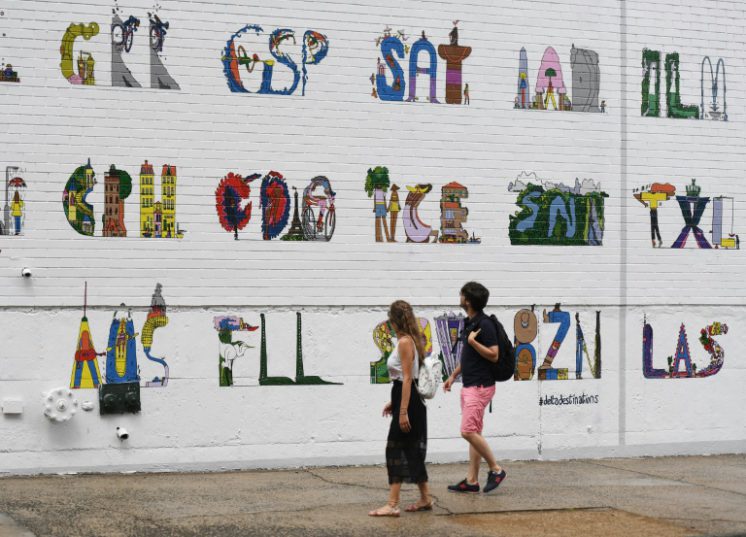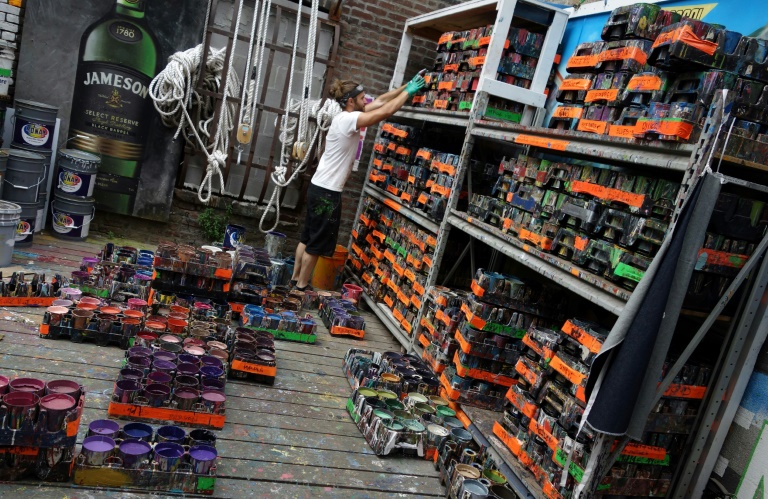Education reform is key to South Africa’s progress
Toiling under the blazing sun of a heat wave, Justin Odaffer puts the finishing touches to a Ray-Ban ad he has spent several days painting on the facade of an East Village building in downtown Manhattan.
For the past seven years, Odaffer — who has a degree in fine art — has painted ads on walls in New York, Los Angeles and Chicago for Colossal Media, which has risen from nowhere to become the leader in painted advertising.
“Basically we created a revival,” says Odaffer. Without the company he works for, he believes painted ads would be hanging “by a very thin thread.”
But setting up the company in 2004 was a leap of faith, admits Paul Lindahl, co-founder of Colossal, which is based in Brooklyn’s hipster hub of Williamsburg.

Hand-painted ad for Delta Airlines adorns a building wall in New York
“Technology was taking over and there was really no need for hand painting at the time. Nobody cared,” says Lindahl, who comes from a family of Hungarian immigrants.
“It was expensive. It was slow,” he concedes. “I didn’t know if there was a future in it at that point. I just knew that I loved it.”
Thirteen years later, his company has 70 employees, paints 450 to 500 murals a year in major US cities and is eyeing sales of $24 million in 2017.
Even though painted ads take longer and cost more, they offer advertisers a unique opportunity to set themselves apart.
Seeing painters in action can generate buzz on street corners.
“People are astonished,” says Odaffer. “That’s why this company has done so well. It’s because people can actually watch the process.”
– But is it art? –

Will Krieg, an apprentice at Colossal Media, organizes paints at Colossal Media’s office in New York
That buzz carries over onto social media, fueled by photographs and videos which enhance brand visibility and advertising, says Lindahl.
“That brings value to what we do. What we realized along the way is yes, this thing takes longer than a digital ad or print ad but that’s part of the benefit. It’s performance art. People stop and they wonder and they’re intrigued.”
Chris Cockerill, general manager of the New York office for Lamar Advertising, one of the largest outdoor advertising companies in the world, agrees — even if the growth still accounts for a fraction of the overall market.
“We’re seeing more around the city. It’s a unique product that advertisers are asking for now. In the past, it’s been something a little more difficult to sell,” he says. Lamar does not work with Colossal.
Lindahl attributes the growth to multiple factors — luck, timing, the “do-in-yourself” trend and the enduring popularity of street art.
Colossal secures its own walls and real estate, which means it can sell a package to advertisers with space and the painted ad without having to depend on another advertising company.
But are commercial ads really art? Odaffer says definitely.
“It’s still the same process as other street art,” he said, adding that many of the painters started out in some form of street art.
“I see nothing wrong with it,” says graffiti artist BG 183, a member of the oldest New York graffiti collective that is still active, Tats Cru.
“The quality of the painting has improved a lot,” says Cockerill. “It stands out better than it has in the past. It makes them (advertisers) feel like it’s more of a hip-looking kind of ad.”
Download our app and read this and other great stories on the move. Available for Android and iOS.